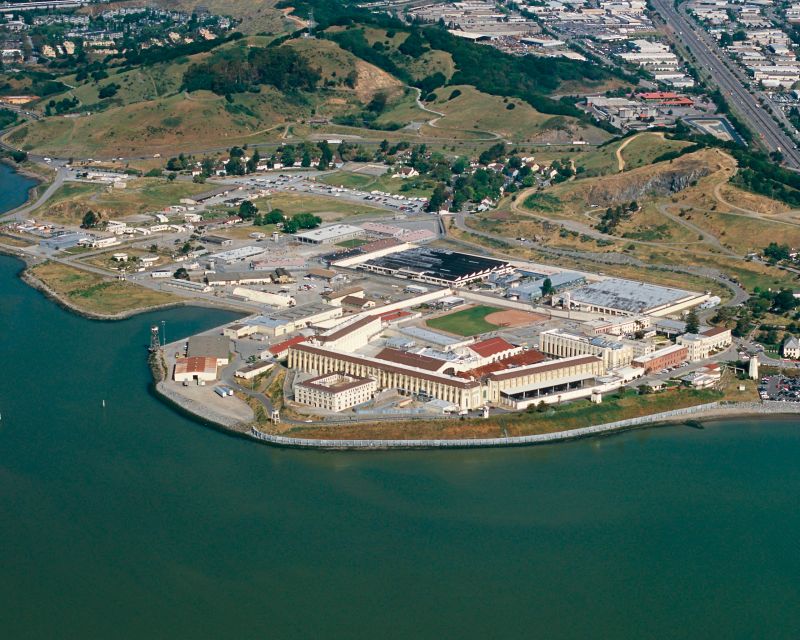A group of Stanford researchers are working with the California Department of Corrections and Rehabilitation (CDCR) to help advise policy to protect incarcerated people in light of the COVID-19 pandemic. Jeremy Goldhaber-Fiebert and Jason Andrews, both associate professors of medicine at Stanford, as well as David Studdert, a Stanford professor of medicine and law, are leading the group, known as SC-COSMO, which is composed of 20 faculty members and graduate students across various disciplines and institutions.
While Studdert commends the State of California on its initial steps to protect the incarcerated population, saying that state officials are “doing a lot to reduce risks, by having disbanded programs, dramatically reduced transfers, altered scheduling, [and by having] embarked on ambitious testing programs,” the incarcerated population is uniquely vulnerable to the communicability of a pandemic disease, given the designs of prisons.
Prisoners in correctional facilities, living in enclosed spaces often in extremely close proximity to one another, are simply very exposed to COVID-19, the disease caused by the SARS-CoV-2 virus. Additionally, the most effective tools to reduce the spread of COVID-19, like masks, frequent handwashing and social distancing, are unfeasible or impossible to enforce consistently among the prisoner population in correctional facilities.
Many prisoners are acutely aware of the high risks posed by their facilities during the pandemic, some feel that contracting the virus is inevitable. According to The New York Times, Fred Roehler, 77, an inmate at a California prison who has chronic inflammatory lung disease, describes his fear of the novel coronavirus as “a sword hanging over my head, any officer can bring it in.”
In many cases, the incarcerated population is already at higher risk for contracting COVID-19, regardless of the facility constraints, as this population suffers from comorbid diseases at a higher rate than the general population, and has a history of inadequate access to health care, both prior to incarceration as well as within prison, which has created a situation in which prisoners are 23% more likely to die from contracting coronavirus, according to the COVID Tracking Project.
The effects of the novel coronavirus in correctional facilities go even further than the physical health risks, as policies rolled out nationwide have shut down myriad social programs that prisoners rely upon, including educational programs and group therapy, which is especially important for the approximately 32% of California prisoners who suffer from mental illness, as stated by the California Health Policy Strategies.
Yet, despite the physiological and psychological vulnerabilities of the incarcerated community, little has been done nationwide to protect those most vulnerable to the virus, Marie Waldron told The New York Times. Waldron is the Republican Minority leader of the California State Assembly.
Studdert says that the Stanford team, which formed “out of a shared desire to do something” about the pandemic, is working to address the concerns of the highly vulnerable prison community by developing models of the prevalence and rates of transmission in California correctional facilities.
The SC-COSMO groups’ modeling is intended to help inform policy that could curtail the spread of COVID-19 in prisons by providing answers to questions such as what resources should be used to address cases, and what targeted nonpharmaceutical interventions (NPI), like social distancing, can do to protect prisoners, guards and administrators.
Additionally, the research group is using contact tracing to identify patterns within the spread of novel coronavirus among prisoners, so that it may be easier to detect and contain outbreaks among the incarcerated population. SC-COSMO is also analyzing the efficacy of group testing, in which individual virus samples are compiled into one test in order to identify positive cases while preserving valuable tests.
The team’s modeling is dependent on the quality of the data collected by the CDCR and the feasibility of converting and analyzing that data, and while the team only began working on this project a month ago, Studdert says their models have already produced preliminary results with applicability in diverse settings.
Both flexible and scalable modeling could enable prisons to proactively adopt mitigation strategies, and to guide similar strategies for incarcerated populations across the world. Currently, the team is specifically involved with the California Prison System and the CDCR, but Goldhaber-Fiebert stated in a Stanford Health Policy (SHP) online seminar that he hopes to “draw important lessons from our analyses of incarcerated populations in California’s prisons and jails which may help to inform the responses of other local, state, and federal correctional facilities nationally.”
SC-COSMO is one of many research initiatives funded by the Stanford COVID-19 Emergency Response Fund, whose creation was established by a $1 million donation by the Horowitz Family Foundation.
Contact Jack Murawczyk at dmurawczyk23 ’at’ csus.org.
